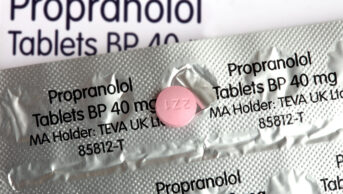
Shutterstock.com

Source: Courtesy Graham Parsons
Graham Parsons, RPS spokesperson on drug misuse, says that pharmacists and local pharmaceutical committees should engage with local commissioners on how they can be part of the ‘joined-up action on alcohol and drugs’
Despite their absence from the government’s new drug strategy, pharmacists can still play a major role in helping to tackle the abuse of drugs, the Royal Pharmaceutical Society (RPS) has said.
The drug strategy 2017 sets out what action the government will take to deal with drug misuse and the harm it causes, including targeting new psychoactive substances (NPS) and so-called chemsex drugs[1]
.
It sets out expectations for action from a wide range of bodies, including those in health, education, safeguarding, criminal justice, housing and employment.
The aims of the strategy are: to prevent young people in particular from using drugs; to target drug dealers; and to offer those on drugs the best chance of recovery through support at every stage of their life.
RPS spokesperson on drug misuse, Graham Parsons, said that despite pharmacists’ absence from the strategy, the profession “can take an active role as we move forward with this new strategy.”
“Pharmacists and local pharmaceutical committees should engage with local commissioners to discuss how they can be part of the ‘joined-up action on alcohol and drugs’.”
“There are still many areas where pharmacies can grasp this opportunity. For example, the impact of naloxone distribution is emphasised in the document in relation to reducing drug-related deaths. Misuse of and dependence on medicines, both prescription only and over the counter, also remains a key theme, and an area pharmacists can engage with,” he added.
National ‘champion’ to be appointed
The government’s action plan includes appointing a national ‘champion’, whose role will be to help increase drug recovery rates. The strategy aims to create new education programmes for children focusing on the dangers of drug use. It also looks to deliver more “targeted interventions”, which will focus on individual needs, such as helping people with their health, employment and housing requirements.
The strategy comes as the number of drug deaths in England and Wales hit an all-time high in 2015, with 3,674 deaths recorded. Of these, 2,479 involved illegal drugs.
Parsons said: “It is not a surprise that the underpinning themes of reducing demand, restricting supply and building recovery remain in place. Building resilience and confidence among young people is welcome as is the collaborative approach to building recovery.
“This includes recognition of social impacts such as housing and mental health impacts on the recovery of an individual. A ‘joined-up approach’ in building recovery should definitely be an ambition for the government and all clinical services.”
The strategy follows a number of recent initiatives aimed at addressing drug misuse, including the Psychoactive Substances Act 2016, which targeted dealing in ‘natural highs’[2]
.
Although the strategy hails this act as “a significant piece of new legislation which can be shared internationally”, Parsons said that “most substance misuse practitioners will await the review of this act, which is due late 2018 before deciding on its impact in the field”.
As to the effectiveness of the strategy, Parsons said: “The proof of the pudding will, of course, be in the eating.
“The drug strategy sets out some major aims and ambitions but the challenge will be how this can be delivered in an environment of austerity.”
The strategy says the public health grant to local authorities will continue until April 2019, but the King’s Fund has recently claimed that a reduction of 5.5 % will come out of money allocated to local councils for drug misuse, and Parsons said there will be concern over funding both now and after April 2019.
References
[1] GOV.UK. Drug strategy 2017. Available at: https://www.gov.uk/government/publications/drug-strategy-2017 (accessed July 2017)
[2] GOV.UK. Psychoactive Substances Act 2016. Available at: https://www.gov.uk/government/collections/psychoactive-substances-bill-2015 (accessed July 2017)


